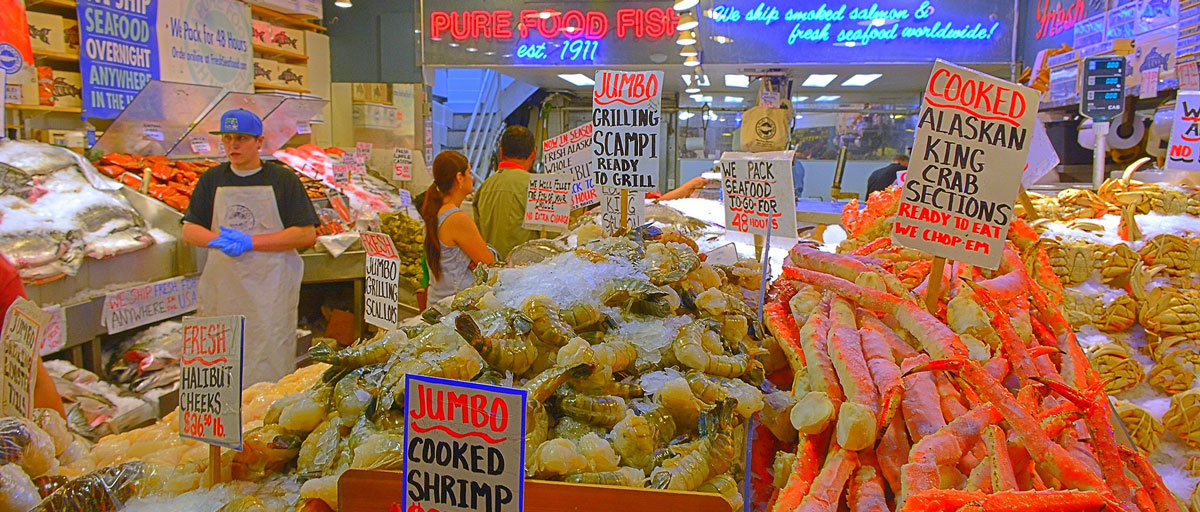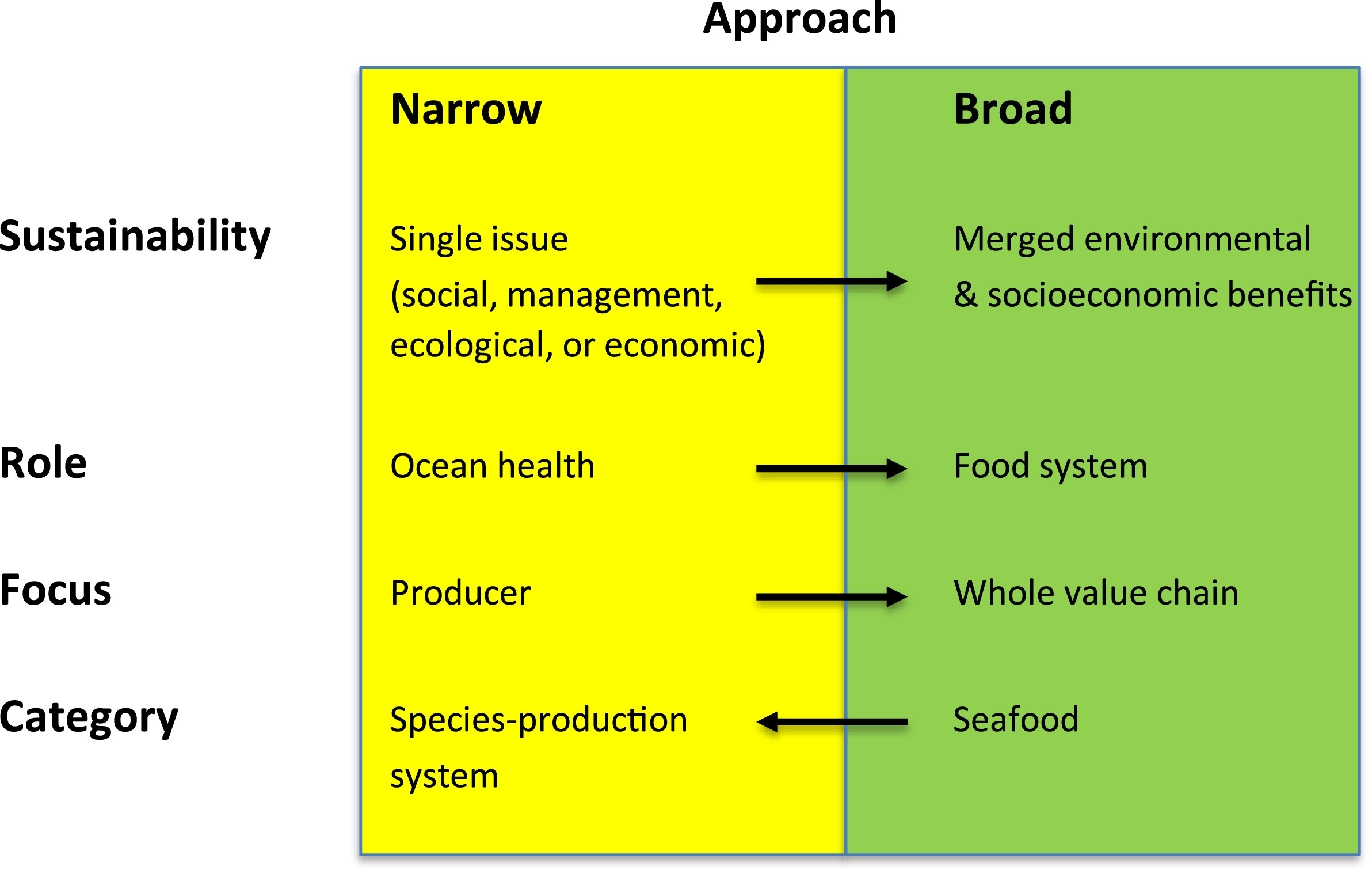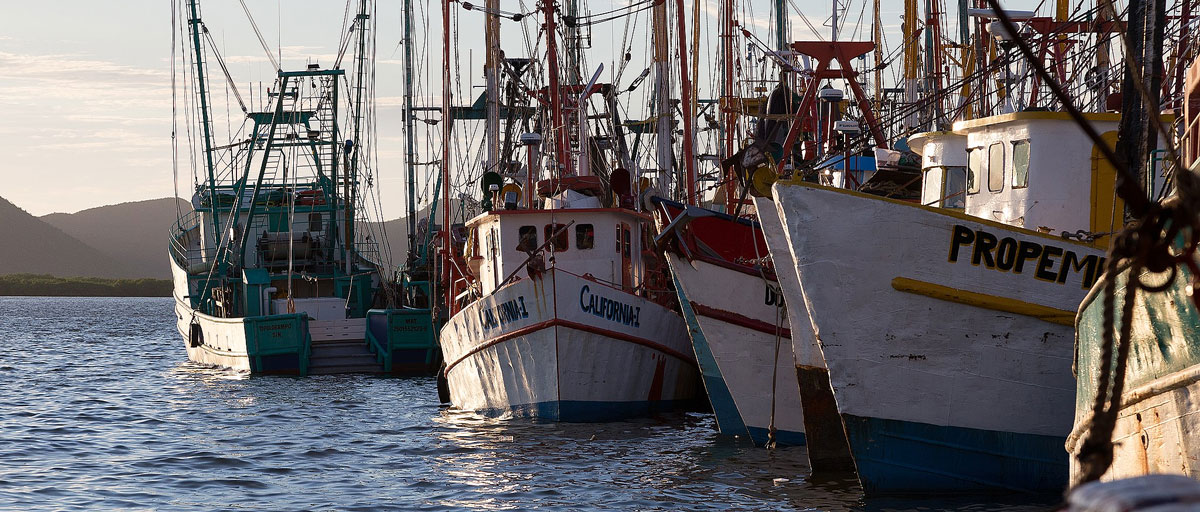
A new article makes a case for changing the narrative around seafood sustainability. It argues that argue that a more holistic definition of sustainability should incorporate the role seafood and practices around seafood production play in ocean health, food security, trade, consumption and human wellbeing more broadly. Photo: K. Edblom/Flickr
Bildtext får vara max två rader text. Hela texten ska högerjusteras om den bara ska innehålla fotobyline! Photo: B. Christensen/Azote
SUSTAINABLE SEAFOOD
A new seafood narrative
Seafood sustainability is still only marginally considered in global policy talks on food production, trade and consumption. That needs to change
- Authors from 11 research institutions worked together to reframe the narrative for sustainable seafood with an aim to integrate seafood sustainability into global food production, trade and consumption.
- Furthermore, broadening the focus would also mean considering things such as energy efficiency and food waste.
- By integrating seafood sustainability into the broader global food system framework they hope that public and private players will take a more holistic approach to seafood sustainability.
Unfortunately, there aren’t plenty of fish in the sea anymore. The discourse around sustainable seafood practices, where aquaculture plays a central role, started in the 1990s, but seafood still remains poorly integrated into food policy and research.
This means concerns around ocean environmental sustainability and food security (and associated human health) have been addressed only in part.
A new article co-authored by centre researchers Patrik Henriksson, Max Troell and Malin Jonell makes a case for changing the narrative around seafood sustainability.
The research effort brings together researchers from 11 institutions spread across the world.
The sustainable seafood narrative needs to be reframed to accurately represent the present and future role that seafoods can play in the global food systems.
Micheal Tulsty, lead author
The full picture of seafood sustainability
Broadly, sustainability means using resources to balance socio-economic needs and environmental integrity in the present and for the future. But in practice, sustainability understandings have tended to be narrow and one-dimensional where the emphasis has been solely on environmental factors. It has also been interpreted differently by different actors and organisations.
Tulsty and colleagues argue that, in contrast, a holistic definition of sustainability will need to incorporate the role seafood and practices around seafood production play in ocean health, food security, trade, consumption and human wellbeing more broadly.
Specifically, their focus is on challenge narratives that authors feel are misleading for render better results for seafood sustainability.

The broad to narrow approach for sustainability, and how that influences the narrative for sustainable seafood. Broadening the approach for the role and focus of sustainability initiatives while narrowing the approach to species–production system categories will clarify the narrative for sustainable seafood. Click on illustration to access scientific study.
Wide range of ocean threats
Framing seafood sustainability primarily in terms of ‘ocean health’ can be limiting. Outside of harmful fishing practices that are directly tied to seafood, oceans today face a myriad range of threats such as dead zones, pollution, warming and acidification - all of which in turn have direct and indirect impacts on seafood sustainability.
It is time that NGOs, states and other sustainability bodies create standards that include this wider range of ocean threats.
Outside of oceans, fish is also being increasingly sourced from aquaculture where agricultural products are used as fish feed.
Studying the linkages between terrestrial and aquatic systems is thus essential to producing and consuming seafood sustainably.
Extend responsibility to all actors
Co-author Patrik Henriksson explains the current lopsided nature of the seafood value chain:
"A bias towards production stages in the value chain places a major burden on fishers and farmers frequently located in low-income countries, while actors located throughout the rest of the value chain receive far less attention and pressure to improve."
Using a food systems approach will extend the responsibility to all the actors in the value chain such as service providers, processors, distributors and, importantly, consumers.
Furthermore, broadening the focus would also mean considering things such as energy efficiency and food waste.
The article discusses how the efforts of the Global Initiative on Food Loss and Waste Reduction are notable in this regard.
More than one kind of fish
As per the UN Food and Agriculture Organization, seafood comprises around 2500 species spanning seaweed, finfishes, molluscs, crustaceans, cnidarians, echinoderms, amphibians, and reptiles.
But when reporting on its environmental and/or nutritional impacts, this diversity is lost as species tend to be lumped together in higher groups like farmed fish, pelagic fish and demersal fish.
Co-author Malin Jonell explains why it is vital to consider the diversity of fish consumed:
"Taking a larger spectrum of aquatic products into account across the global food system would enable greater recognition of those species that contribute to supplies of animal-source food, rather than only those that are dominant in high-income country markets."
The authors stress the need to put into practice what they call a ‘seafood systems approach’.
"This more holistic approach can better equip the seafood industry, NGOs and governments to keep oceans, the fish in it, supporting resource systems also including land, and the people dependent on seafood healthy in the long run," summaries Max Troell.
Tlusty, M.F., Tyedmers, P., Bailey, M., Ziegler, F. Henriksson, P.J.G., et.al. 2019. Reframing the sustainable seafood narrative. Global Environmental Change
Volume 59, November 2019, 101991

Patrik Henriksson is a postdoctoral researcher at the Beijer Intistitute of Ecological Economics and the Stockholm Resilience Centre, evaluating evaluated seafood systems in Indonesia, Bangladesh, Egypt, and Sweden.










